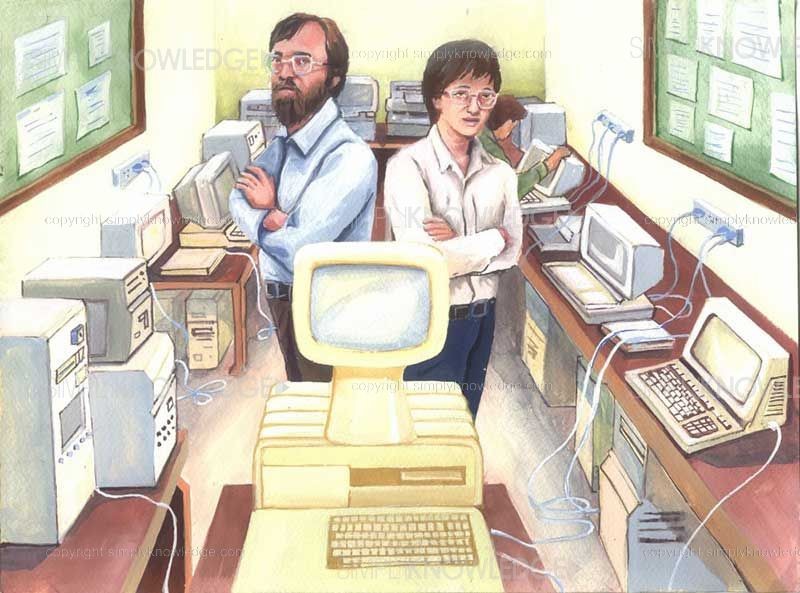Reverse Engineering IBM s Fair Value International Business Machines Corporation (NYSE IBM)
Post on: 19 Июль, 2015 No Comment

Summary
- Even after significant price declines, IBM is still overvalued.
- Stock buybacks at IBM are not a panacea for lack of earnings growth and increased debt.
- Even with a dramatic reduction in the share count, IBM’s book value is significantly lower than it was a decade ago.
- Technically, price is targeting 2008 levels.
The more time I spend trading and investing, the more I come to question the methods of the great investors. I can’t imagine that Warren Buffett is comfortable right now with his investment in IBM (NYSE:IBM ), no matter what the Oracle says about lower prices being a dream-come-true opportunity to increase his investment stake. Buffett has been a vocal advocate of stock buybacks based on the idea that he owns a bigger piece of the pie every time a company uses cash to buy back stock. But IBM investors apparently didn’t get the memo since the stock is down 30% from its 2013 highs while the share count has contracted nearly 60% since 2005. The data set below tells you everything you need to know about why this is happening.
(click to enlarge)
In 2005, IBM had 1.6 billion shares outstanding and a book value per share of $21.12. Buybacks reduced the share count to nearly 1 billion shares by 2014. Unfortunately, the book value per share also tumbled to $14.40, plunging nearly 25%! This isn’t the way it’s supposed to work. Going back to Buffett’s piece of the pie analogy, buybacks are supposed to grow your piece, not serve you crumbs.
The reality is, IBM’s revenue has been flat for years, and the company has only been eeking out single-digit EPS growth thanks to the buyback illusion. In fact, the only real growth IBM has seen is in its debt load.
It’s clear that IBM was becoming grossly overvalued at over $200 a share, but where are we now? Since I just finished an excellent read in Vitaliy Kastenelson’s Active Value Investing: Making Money in Rangebound Markets, I’ll use the author’s absolute P/E method on Big Blue to see if price declines have created value gaps or sprung a trap.
IBM’s current P/E = 10.3. While Kastenelson recommends using the expected EPS growth rate to determine a fair P/E, I’m going to use net income to remove the impact of buybacks. While analysts anticipate 3% EPS growth, growth in net income has always run a third to a half of EPS growth. The trend is lower and I believe it’s fair to call IBM a company with zero net income growth. This earns IBM a fair value P/E of 7. Kastenelson’s method graciously awards 2.5-3 points for IBM’s 2.75% dividend yield, so 10 is the fair P/E.
Now. all companies are not created equal. Kastenelson’s method addresses this fact by adjusting the base P/E for business risk, financial risk and earnings visibility. This is where things get a little subjective, but I’m going to break down each area with my thoughts. Hat tip to Seeking Alpha contributor Jae Jun who strives to standardize this process on his excellent Old School Value spreadsheet, but I have to break with him a bit on the metrics he uses.

Business Risk
While Jun’s model looks at returns on equity, assets and investment capital, I don’t believe these metrics adequately capture business risk. IBM boasts extraordinary returns on equity, but is it keeping up with the times? One needs to look no further than insider Peter Gruelich’s thoughts on the culture at IBM to question the company’s future.
Truly assessing business risk requires a view on the future. The company operates in a fast-changing, hostile environment. Competitor Microsoft (NASDAQ:MSFT ) recently reported commercial cloud revenue grew 114% in it fiscal ’15 second quarter while IBM reported 60% growth. Newer, more nimble companies like FireEye (NASDAQ:FEYE ), Palo Alto (NYSE:PANW ) and Vasco Data Security (NASDAQ:VDSI ) are competing for cyber security market share. Is it all too little, too late for IBM?
Even though I see strategy execution risk as high, I will give IBM the benefit of the doubt on business risk and call it average. This means the base PE is not affected (no premium/no discount).
Financial Risk
I see a great deal of financial risk at IBM. In addition to the long-term debt trend I pointed out above, total liabilities outnumber shareholder equity by 8 to 1. This is a highly leveraged company — in the tech world that’s a recipe for disaster.
I discount IBM’s fair P/E by 5% for financial risk.
Earnings Visibility
While EPS has increased relatively consistently at IBM, I must reiterate my stance that this is largely due to buybacks (operating cash flow has been in decline since 2009). On the other hand, margin growth trends are a positive. Like business risk, I’ll call earnings visibility average and remain neutral, assigning neither a premium or discount.
IBM Fair Value
Our base PE of 10 x 1 (business risk) x .95 (financial risk) x 1 (earnings visibility) = 9.5, which equates to a fair value of $148 for IBM using 2014 EPS of $15.59. This is an 8% haircut from current levels and leaves no margin of safety in an investment at these levels. Technically, I see price eventually testing high-volume selloff levels from 2008 in the 120s.
Disclosure: The author has no positions in any stocks mentioned, and no plans to initiate any positions within the next 72 hours. (More. ) The author wrote this article themselves, and it expresses their own opinions. The author is not receiving compensation for it (other than from Seeking Alpha). The author has no business relationship with any company whose stock is mentioned in this article.














